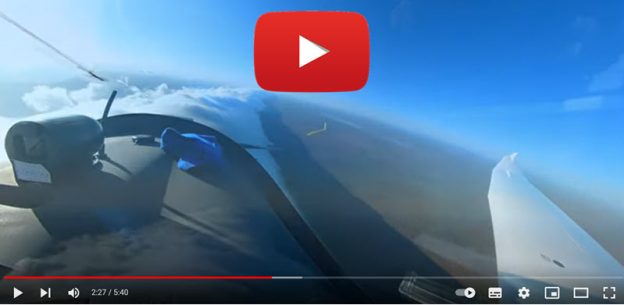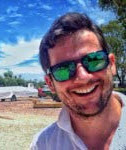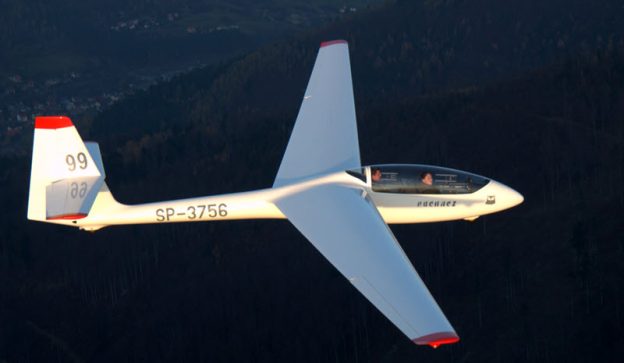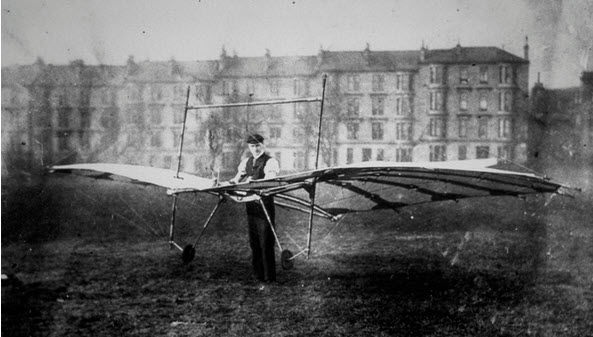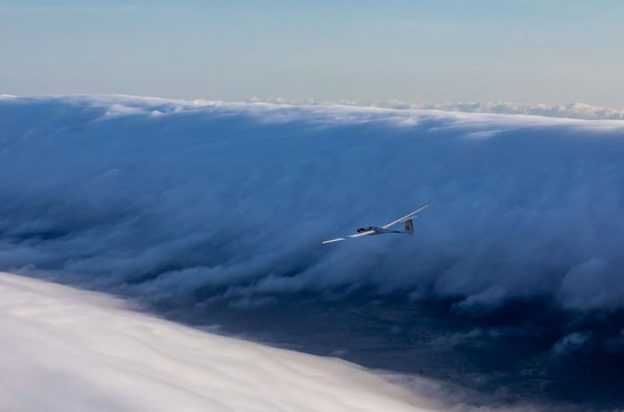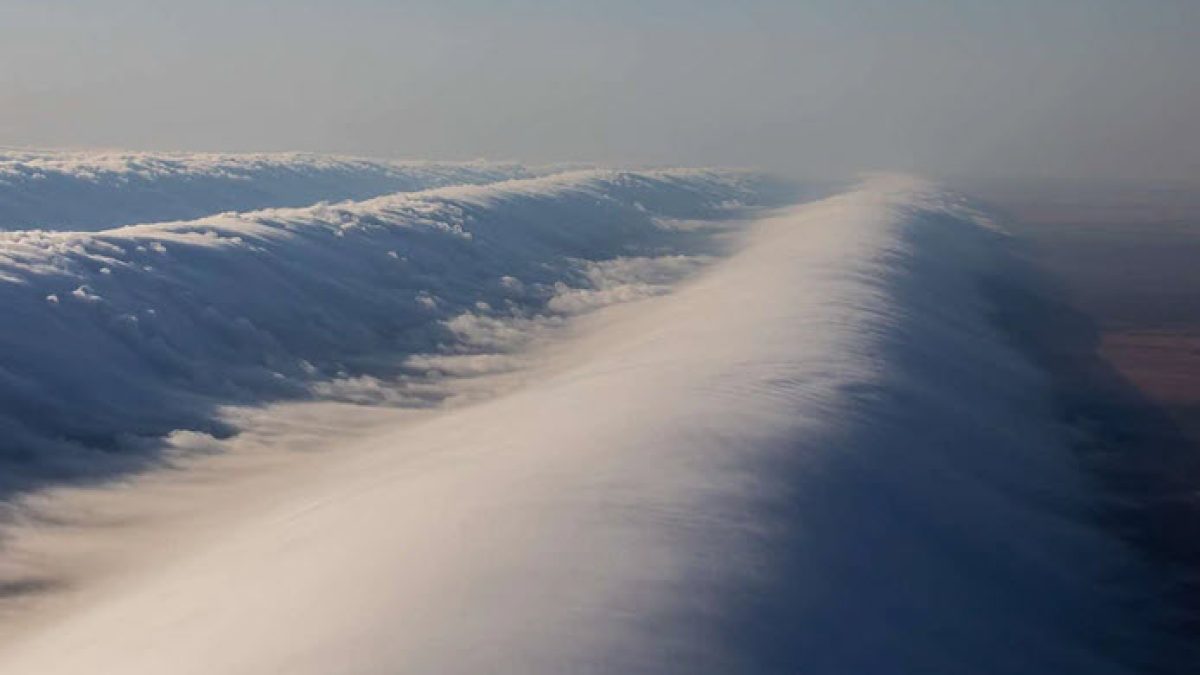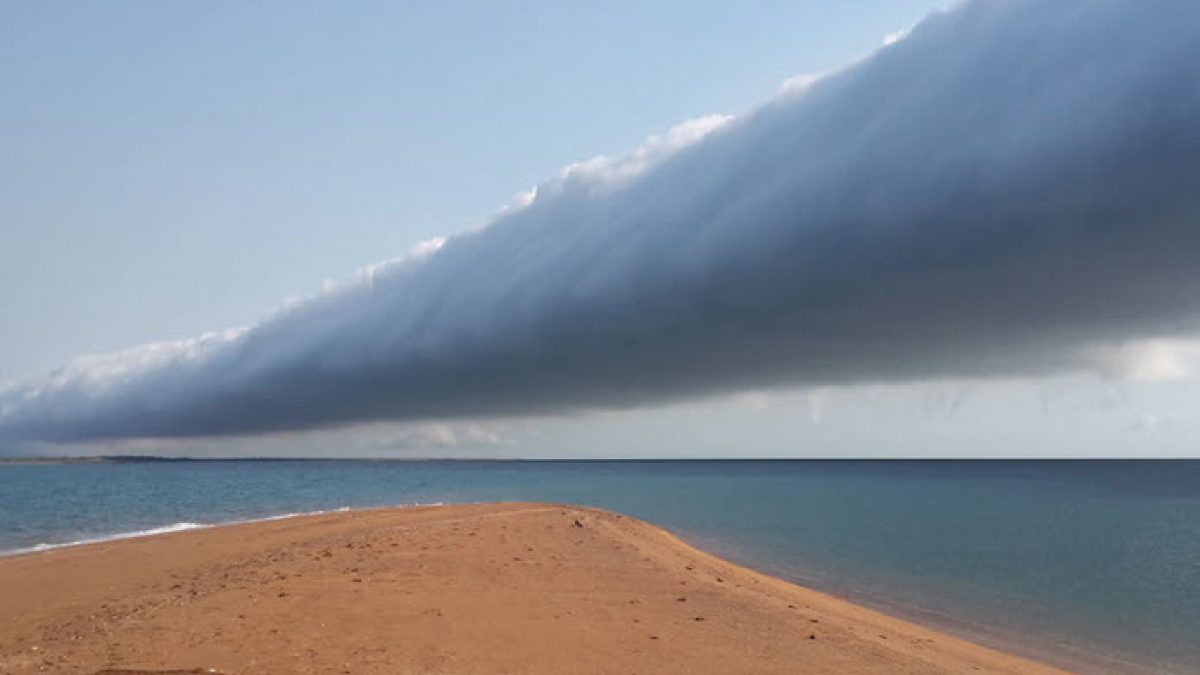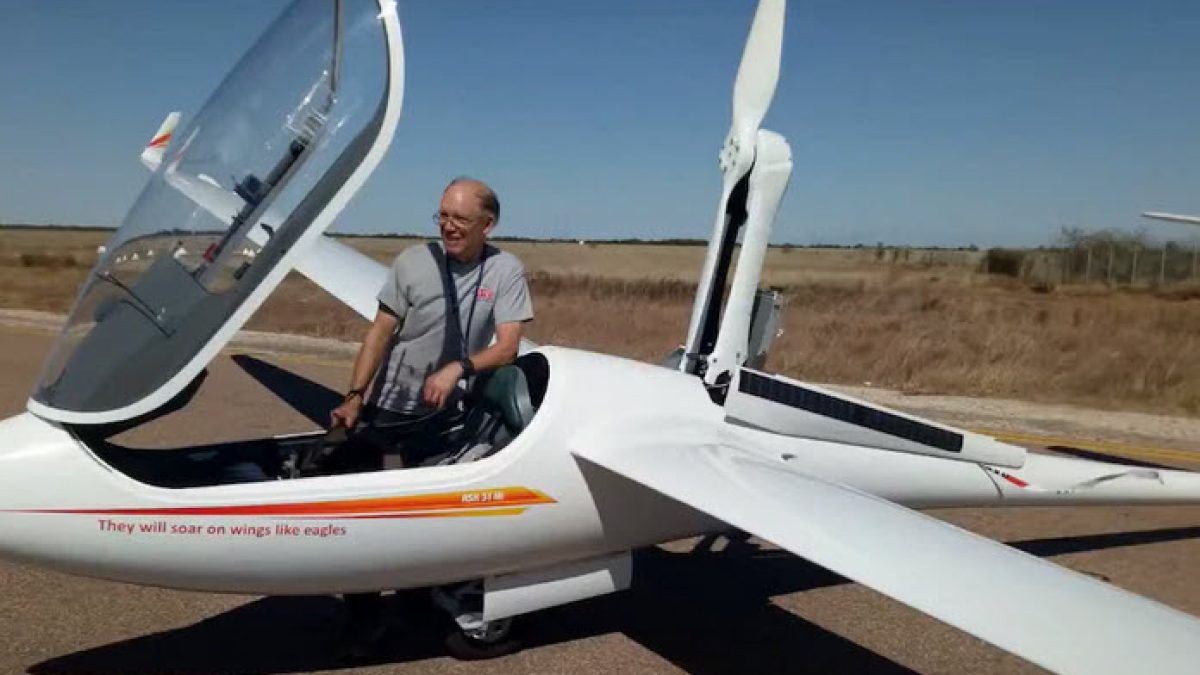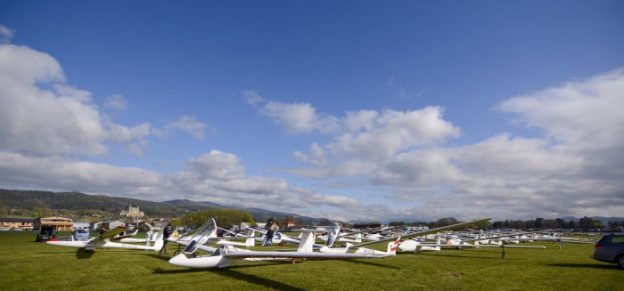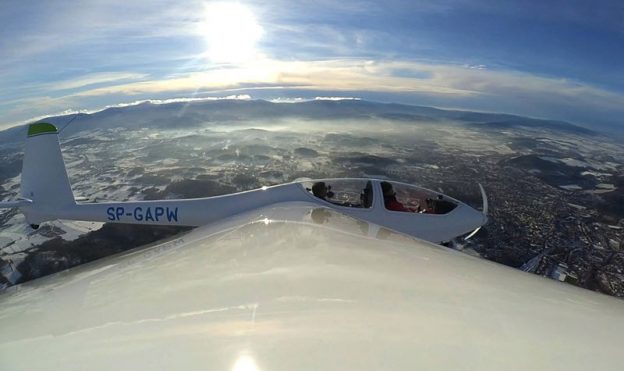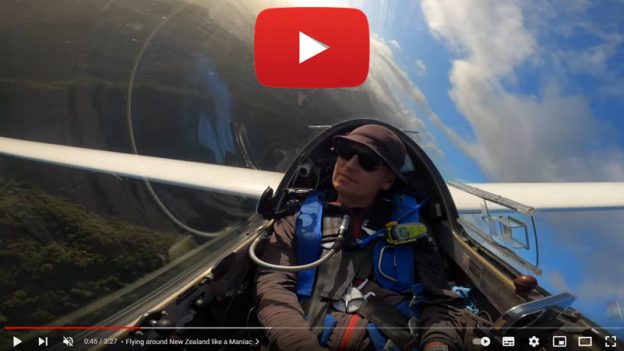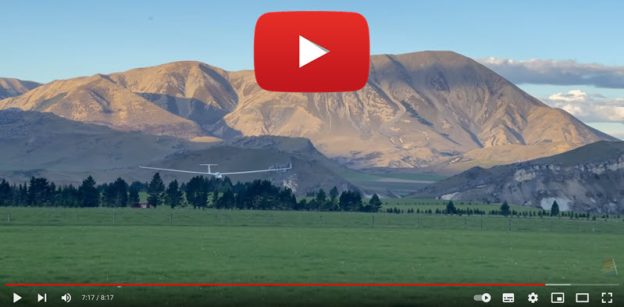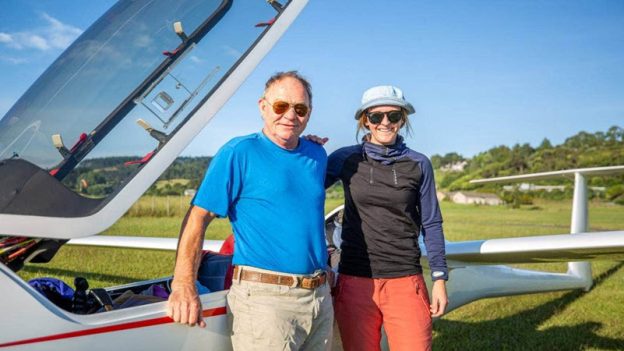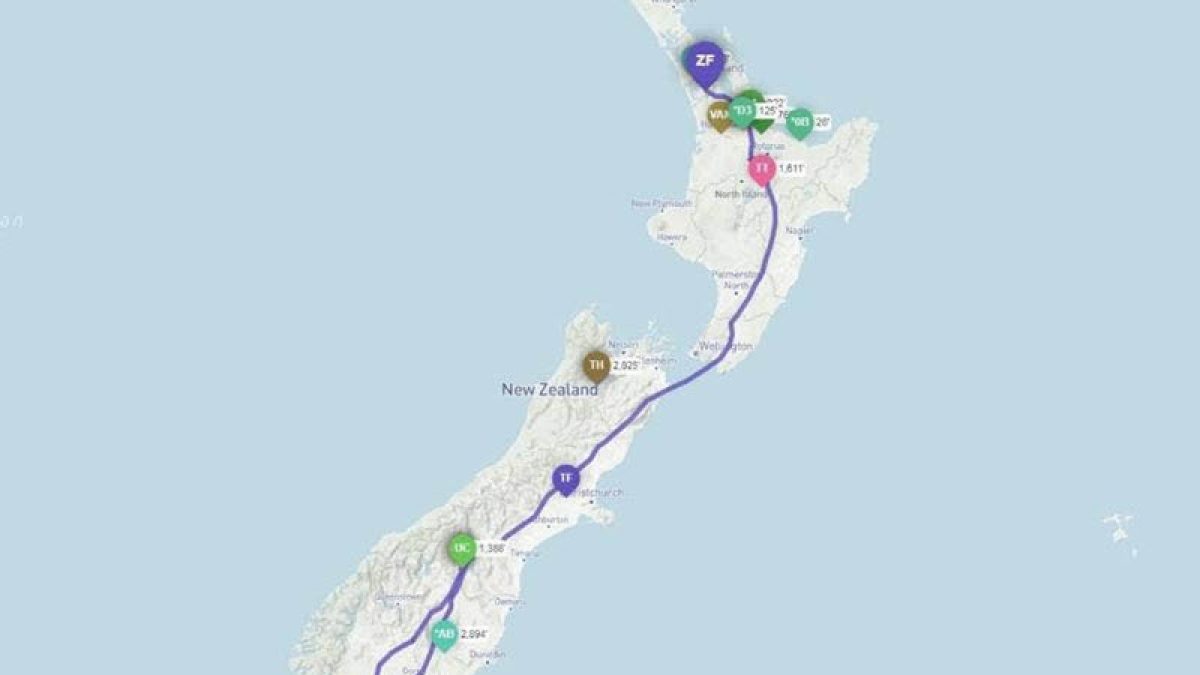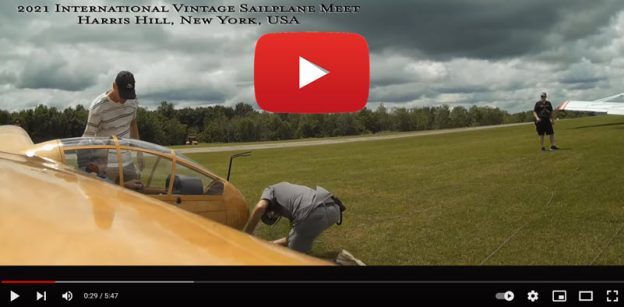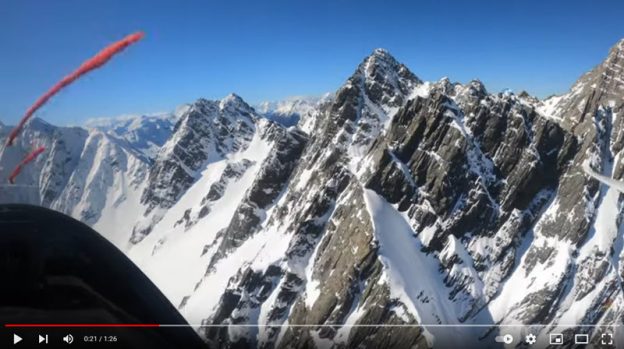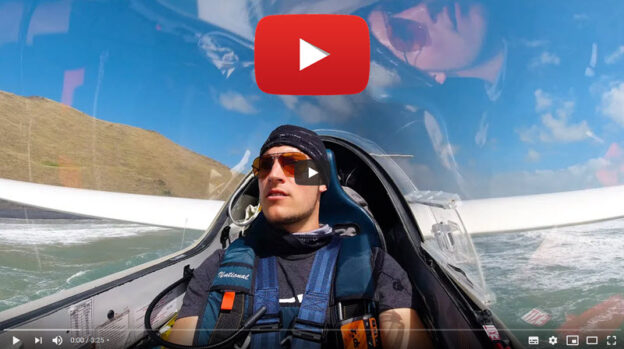Alex and Morgan Chery were on an early summer vacation with their dad and stepmom. Driving along Highway 79 in the desert from their home in Newport Beach, California, the family passed a long, dusty airstrip with an unassuming faded-pink ranch house, windsock, and half a mile’s worth of sailplanes in their hangars. Alex said, “stop”—he wanted a ride in a sailplane. And his dad, Anthony, a pilot, wanted him to have that ride.
At 12, Alex has flown more than most kids his age. His dad owns and flies a Piper Malibu and the family takes flying vacations all over the country. Alex has a mild form of cerebral palsy, which affects his motor skills. “He is an adventure-seeker at heart,” says his stepmom, Erika Houser. “Which is why he has defied what his doctors said at his birth—that he would never be able to walk. Flying is a treat for him because he is equal in the air.”
Anthony pulled the SUV into the parking lot and the family of four headed for the porch of the old ranch house. There sat a guy who could relate; 66-year-old Bret Willat (his birthday would be the next day) struggles to move in his body, too. An accident burst his vertebrae and doctors told him he’d never walk again. But, like Alex, he didn’t give up. Although he often looks like he’s struggling and hurting, he gets around well and, with his wife and sons, has been running Sky Sailing in Warner Springs, California, since 1979. Taking kids like Alex for a soaring experience in a Grob G–103A is exactly why Willat is in this business.
A colourful history
Bret Willat is a character. He loves to tell stories—and he has a bunch. Probably the most surprising are those about his father. It’s clear where he gets his flair for the dramatic. Irvin Willat adopted Bret when he was a baby. Bret claims his father “collected people.” A wealthy Hollywood filmmaker, Irvin Willat directed 39 silent films, including the first all-colour western—Wanderer of the Wasteland by Zane Grey. He directed Harry Houdini in films, had his offices in the Spadena House—also known as The Witch’s House—in Beverly Hills, and reportedly was paid $325,000 by Howard Hughes to divorce his then-wife, actress Billie Dove, whom Hughes desired but never married.
The older Willat was famous for action films as well as westerns, and it was on a set for a movie with his father that Bret was first introduced to flying. He soloed in a glider at 15 and later attended the U.S. Military Academy at West Point. But he was injured and was discharged just as his older half-brother A.J. Allee came home from Vietnam. A.J. encouraged his brother to continue flying and Bret earned ratings at Flabob Airport in Riverside, California. While at Flabob, Bret became chief pilot at Art Scholl Aviation. He flew with Scholl the day before the Hollywood stunt pilot was killed while filming the movie Top Gun.
After moving to the San Francisco Bay area, Willat worked for famed CFI Amelia Reid. Under her tutelage, he began to believe strongly that “when learning to fly in a powered aircraft, one must, to do it best, learn in a taildragger. The best overall way to learn to fly, however, is in a sailplane.” In 1979, Willat began instructing in Fremont, California, at Sky Sailing Airport and eventually bought the company. In 1980 he married another sailplane instructor; Karen and he flew the first sailplane formation wedding ceremony. Five sailplanes flew in formation with five tow planes—the minister officiated from the lead airplane.
The act
Willat believed the best way to showcase sailplane flying was to perform in airshows. He began performing a sailplane routine in 1979. As their business grew, so did Karen and Bret’s family. First Garret—who as a little boy rode a tiny biplane on the ground during the airshow—and then Boyd joined the act. Karen was the tow plane pilot. “The Flying Willats: Sailplane Magic Airshow Team” uses a Grob G–103A sailplane that soars to music and trails smoke from the pyrotechnics on the wings and tail. The sailplane is towed to 4,000 feet AGL and once released, the pilot (Bret, Garret, or Boyd) talks to the audience about the sport of soaring and performs smooth, graceful loops and rolls and other aerobatic manoeuvres. “It’s a peaceful aerobatic routine, a contrast to acts like Sean D. Tucker,” said Boyd. “It’s almost romantic.”
Both Garret and Boyd are integral parts of the family business. Garret set records—and created a media event—when he soloed 18 different gliders on his fourteenth birthday. Boyd, not to be outdone, soloed 23 gliders on his fourteenth birthday. All were documented by news and media outlets.
The business had moved to Warner Springs from Fremont in the 1980s and the school there is a mecca for soaring enthusiasts. Surrounded by the California Peninsular Range—a north/south mountain range that includes Palomar Mountain—the area is ideal for soaring. At almost 3,000 feet MSL, Warner Springs sits nestled in a range that climbs to 10,000 feet. These mountain ranges help create the lift for the sailplanes. “Location, location, location. Between the Pacific marine influence and the desert influence, we can soar almost every day of the year,” said Bret.
Although Boyd now works offsite for FedEx, Garret lives on the property with his parents and his two children. Garret is a chief flight instructor and runs Yankee Composites, a sailplane repair centre. Sky Sailing is open seven days a week and is busiest on weekends when reservations are recommended. About 100 soaring pilots base their gliders at Warner Springs Airport. Lessons and rides are offered, including a Stemme motorglider flight for $275 for a 45-minute soar that takes the pilot and passenger over the Palomar Observatory, one of the oldest active astronomical observatories in the world, with several telescopes, including the 200-inch Hale Telescope. The school prides itself on its safety record. While all members of the family encourage visitors to experience soaring, they are also well aware that the experience may not be for everyone. “The glider rating is an add-on, according to the FAA,” said Garret. “When we teach powered pilots, we have a lot of unteaching to do. They learn to fly, not just drive in the sky.”
The accident
For Bret Willat, soaring is next to breathing. So when the Call-Air A–9A he was flying as a tow plane pilot crashed at 20 Gs after a carbon monoxide leak incapacitated him in 1985, he was first grateful to be alive—and second, ready to walk and fly again. The doctors didn’t think that possible. He is an “incomplete paraplegic” as his L-1 and L-2 vertebrae exploded on impact. Karen was at home with Garret when the accident happened. The doctors told her Bret would never walk again. But he was in a wheelchair heading up the Watsonville Fly-In just three weeks later and flew in the Reno Air Races three months after that. “It made me appreciate things in my life, but it never made me think about leaving aviation,” Bret said.
“The business had to go on,” Karen said. “We just kept going.”
He has a crumbling way of walking and looks like he has just gotten up from sleeping in a bad position. His feet hurt but you’d never know it from his 1,000-watt smile. While his sons perform his original sailplane airshow, Bret still performs the night show—with 120 different pyrotechnics strapped on the aircraft. And with more than 20,000 flight hours, he doesn’t show signs of quitting. “There’s nothing more important than family,” he says, driving an ATV around the airstrip with his dog. The wind hums in the background and an occasional truck rumbles down Highway 79. A tow plane roars off the 3,500-foot runway pulling a sailplane into the sky, its occupants all smile. As for the Chery family from Newport Beach, both Alex and Morgan flew with Garret in the Grob with Alex handling the controls “three-quarters of the flight; he was a natural,” Garret said. Morgan had a blast. Their stepmother said both boys can’t wait to soar again. Source: ‚AOPA‚.
Diesen Beitrag teilen mit:
Gefällt mir:
Gefällt mir Wird geladen …
